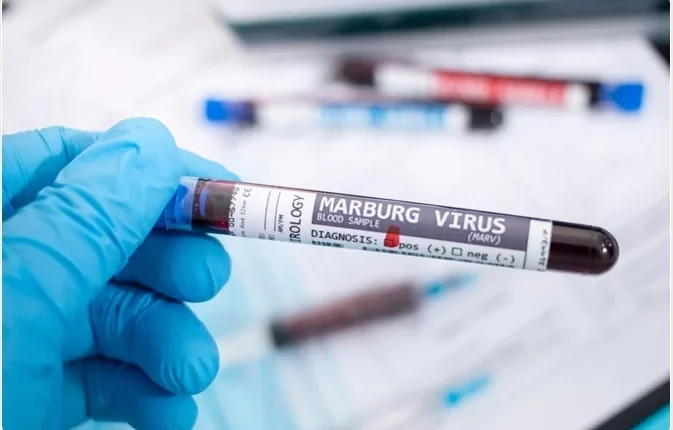The Ghana Health Service (GHS) has announced two suspected cases of the Marburg virus disease have been recorded in the Ashanti Region.
Marburg is a highly infectious viral haemorrhagic fever in the same family as the well-known Ebola virus disease.
Samples taken from two patients by the country’s Noguchi Memorial Institute for Medical Research indicated the cases were positive for Marburg virus disease.
However, per the standard procedure, the samples have been sent to the Institute Pasteur in Senegal, a World Health Organization (WHO) Collaborating Centre for confirmation.
The two patients from the Ashanti region showed symptoms including diarrhoea, fever, nausea and vomiting and had been taken to a district hospital in Ashanti region.
Preparations for a possible outbreak response are being set up swiftly as further investigations are underway.
World Health Organization (WHO) is deploying experts to support Ghana’s health authorities by supporting disease surveillance, testing, tracing contacts, preparing to treat patients and working with communities to alert and educate the public about the risks and dangers of the disease and to collaborate with the emergency response teams.
The Ghana report brings four key things you need to know about the virus.
- Causes of the Marburg Virus disease
MVD is caused by the Marburg virus, a genetically unique zoonotic (or, animal-borne) RNA virus of the filovirus family.
Marburg virus was first recognized in 1967, when outbreaks of hemorrhagic fever occurred simultaneously in laboratories in Marburg and Frankfurt, Germany and in Belgrade, Yugoslavia (now Serbia).
Thirty-one people became ill, initially laboratory workers followed by several medical personnel and family members who had cared for them. Seven deaths were reported.
- How can a person get infected?
Humans usually get infected with this disease after long exposure to mines or caves where Rousettus bat colonies live. These bats are natural hosts of the Marburg virus.
Marburg virus spreads from person to person through direct contact with an infected person’s blood, organs, secretions, or other bodily fluids. Materials and surfaces (like clothing or bedding) can contain infected fluids, and touching them can also spread the virus.
Transmission can also result from contaminated injection tools or needle-stick injuries. These cases usually cause more intense disease, a quick decline in health, and perhaps a higher death rate.
In addition, burial ceremonies that involve direct contact with the body of someone who had MVD could also lead to transmission. Experts still consider you infectious if your blood contains the virus.
- Symptoms of Marburg Virus Disease
The incubation period, which refers to the length of time from infection to when you first notice symptoms, is between 2 to 21 days.
After this period, symptom onset is sudden and marked by fever, chills, headache, and myalgia.
Around the fifth day after the onset of symptoms, a maculopapular rash, most prominent on the trunk (chest, back, stomach), may occur. Nausea, vomiting, chest pain, a sore throat, abdominal pain, and diarrhea may appear.
Symptoms become increasingly severe and can include jaundice, inflammation of the pancreas, severe weight loss, delirium, shock, liver failure, massive hemorrhaging, and multi-organ dysfunction.

- Diagnosis of MVD
The IgG-capture ELISA is appropriate for testing persons later in the course of disease or after recovery.
- Can Marburg Virus Disease be treated?
There is no specific treatment for Marburg virus disease.
But supportive hospital therapy can be used, which includes balancing the patient’s fluids and electrolytes, maintaining oxygen status and blood pressure, replacing lost blood and clotting factors, and treatment for any complicating infections.

- How can it be prevented?
Avoid close or physical contact with Marburg patients. Persons taking care of infected patients must wear gloves and appropriate personal protective equipment and practice regular handwashing.
Also, identifying people who may have been in contact with someone infected with Marburg virus and monitoring their health for 21 days, separating the healthy from the sick to prevent further spread and providing care to confirmed patient can contain the spread of the disease.
Maintaining good hygiene and a clean environment need to be observed.
Outbreak of the virus can be prevented when there is prompt, safe and dignified burial of the deceased affected by the disease.



